Sensor Sweep: Space 1889, Robert Bloch in Star Trek, Lovecraftian Movies
Monday , 29, May 2023 Sensor Sweep Leave a commentStar Trek (The Companion): If you make Kirk a sea captain and turn the snow-caked planet of Exo III into the Antarctic then the hunt for a lost expedition feared dead, but in fact, transformed by their findings subterranean city of a long-forgotten alien race, then it’s basically a sequel to H.P. Lovecraft’s At the Mountains of Madness (1931). The striking visual twist of the turntable that transforms an eerie husk of stunted limbs into a perfect android duplicate likewise echoes the reveal at the climax of Lovecraft’s The Whisperer in Darkness
snow-caked planet of Exo III into the Antarctic then the hunt for a lost expedition feared dead, but in fact, transformed by their findings subterranean city of a long-forgotten alien race, then it’s basically a sequel to H.P. Lovecraft’s At the Mountains of Madness (1931). The striking visual twist of the turntable that transforms an eerie husk of stunted limbs into a perfect android duplicate likewise echoes the reveal at the climax of Lovecraft’s The Whisperer in Darkness
 Cinema (CBR): 1982’s Conan the Barbarian was a surprise hit for Universal Pictures, putting star Arnold Schwarzenegger on the map and launching a wave of swords-and-sorcery movies throughout the 1980s. Even more impressive, it’s gone on to become a fantasy classic, with Schwarzenegger periodically lobbying director John Milius to make another sequel with him. The same can’t be said for most of the swords-and-sorcery movies that followed it. The sub-genre was a shabby one, to begin with, with quality taking a sharp dip in the wake of Conan the Barbarian’s success.
Cinema (CBR): 1982’s Conan the Barbarian was a surprise hit for Universal Pictures, putting star Arnold Schwarzenegger on the map and launching a wave of swords-and-sorcery movies throughout the 1980s. Even more impressive, it’s gone on to become a fantasy classic, with Schwarzenegger periodically lobbying director John Milius to make another sequel with him. The same can’t be said for most of the swords-and-sorcery movies that followed it. The sub-genre was a shabby one, to begin with, with quality taking a sharp dip in the wake of Conan the Barbarian’s success.
Cinema (Startefacts): This horror subgenre is notoriously difficult to adapt to the screen, but some filmmakers manage to do it flawlessly. “Lovecraftian” horror got its name from the works of H. P. Lovecraft, a famous American writer known for his unique approach to the genre, which relied more on the psychological aspect and the viscous, sticky atmosphere of horror.
to the screen, but some filmmakers manage to do it flawlessly. “Lovecraftian” horror got its name from the works of H. P. Lovecraft, a famous American writer known for his unique approach to the genre, which relied more on the psychological aspect and the viscous, sticky atmosphere of horror.
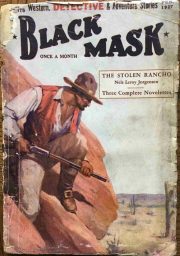 Pulp (Pulp Flakes): There are promising signs in this issue of the Black Mask that would emerge later in Shaw’s reign. The first half of Hammett, Suter and Whitfield’s stories are good but the plots sag in the middle. Gardner’s story is exciting but implausible. The quality isn’t there yet; no stinkers but also nothing really stands out. I’m a fan of adventure fiction, but the reprinted content in this issue is not stuff I would pay money for.
Pulp (Pulp Flakes): There are promising signs in this issue of the Black Mask that would emerge later in Shaw’s reign. The first half of Hammett, Suter and Whitfield’s stories are good but the plots sag in the middle. Gardner’s story is exciting but implausible. The quality isn’t there yet; no stinkers but also nothing really stands out. I’m a fan of adventure fiction, but the reprinted content in this issue is not stuff I would pay money for.
Games (Sprague de Camp Fan): Conan Exiles has been a bit of an obsession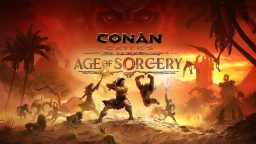 of mine since it was first released in 2018. I didn’t play it much back then because there wasn’t a lot to do and there was no tutorial nor any online resources to help play the game. It often became a frustrating experience of trial and error as I figured out a few things until I finally gave up and moved on to something easier.
of mine since it was first released in 2018. I didn’t play it much back then because there wasn’t a lot to do and there was no tutorial nor any online resources to help play the game. It often became a frustrating experience of trial and error as I figured out a few things until I finally gave up and moved on to something easier.
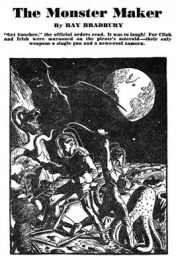 Science Fiction (Dark Worlds Quarterly): Ray Bradbury in Planet Stories follows Ray’s first publications in Weird Tales. Where those stories would eventually lead to Dark Carnival (Arkham House, 1947), the tales of space from Planet Stories would find their way into Bradbury’s SF bestseller, The Martian Chronicles (Doubleday, 1950). Planet Stories offered Bradbury a place to work on his own brand of SF, poetic but still about aliens and strange worlds. (Readers weren’t always happy about it in the letter columns.) John W. Campbell’s Astounding Science-Fiction would never have published these kinds of tales.
Science Fiction (Dark Worlds Quarterly): Ray Bradbury in Planet Stories follows Ray’s first publications in Weird Tales. Where those stories would eventually lead to Dark Carnival (Arkham House, 1947), the tales of space from Planet Stories would find their way into Bradbury’s SF bestseller, The Martian Chronicles (Doubleday, 1950). Planet Stories offered Bradbury a place to work on his own brand of SF, poetic but still about aliens and strange worlds. (Readers weren’t always happy about it in the letter columns.) John W. Campbell’s Astounding Science-Fiction would never have published these kinds of tales.
Firearms (Special Ops): The M11, a US military designation for the SIG Sauer P228 pistol, has garnered significant attention since its adoption by the US military in the early 1990s. Primarily issued to Military Police, Naval Aviation, Military Criminal Investigation Command, and other units requiring a compact and discreet handgun, the M11 quickly became popular among civilian customers. This article delves into the features, design, and variants of the M11 compact pistol, highlighting its significance and exploring its replacement, the M18.
Sauer P228 pistol, has garnered significant attention since its adoption by the US military in the early 1990s. Primarily issued to Military Police, Naval Aviation, Military Criminal Investigation Command, and other units requiring a compact and discreet handgun, the M11 quickly became popular among civilian customers. This article delves into the features, design, and variants of the M11 compact pistol, highlighting its significance and exploring its replacement, the M18.
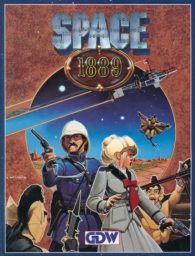 RPG (Grognardia): Seeing Frank Chadwick’s letter in issue #75 of White Dwarf reminded me that he was one of GDW’s top designers during that storied game company’s nearly quarter-century of existence. While he’s probably best known for his work on board and miniatures wargames like Command Decision and Europa, he was also responsible for, either solely or in part, many of GDW’s roleplaying games, starting with En Garde!.
RPG (Grognardia): Seeing Frank Chadwick’s letter in issue #75 of White Dwarf reminded me that he was one of GDW’s top designers during that storied game company’s nearly quarter-century of existence. While he’s probably best known for his work on board and miniatures wargames like Command Decision and Europa, he was also responsible for, either solely or in part, many of GDW’s roleplaying games, starting with En Garde!.
Cinema (Bounding Into Comics): Actor Harrison Ford, who plays Indiana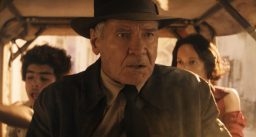 Jones in the upcoming Indiana Jones and the Dial of Destiny film, recently described the character is portrayed as “not so strong, not so brave, not so attentive” in the film.
Jones in the upcoming Indiana Jones and the Dial of Destiny film, recently described the character is portrayed as “not so strong, not so brave, not so attentive” in the film.
Games (Goodman Games): The wayfarer is the DCC Dying Earth class that mimics two of Jack Vance’s notorious characters, Cugel the Clever and Liane the Wayfarer. The wayfarer is not a thief, per se, but rather a swordsman and minor magician who relies on finesse, luck, and charming rhetoric.
Fantasy (Howard A. Jones): A lot of Hanuvar related news today. First, if you can’t wait for the upcoming books, it’s possible to order an eARC of Lord of a Shattered Land right here. It’s not QUITE the final version, but it’s awfully close. You can order your own copy here. Second, I just gave an interview to Upstream Reviews about Hanuvar and sword-and-sorcery in general, and you can read it here.
Games (Grim Dark Magazine): The Wolf Among Us is, in my opinion,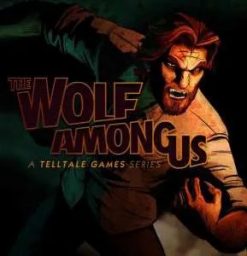 Telltale’s best game. This is a controversial opinion because most people tend to point to The Walking Dead as the best game. It’s a close tie but I believe the adaptation of Bill Willingham’s Fables is the better of the two for a variety of reason. I also admit to personal bias as I am a huge fan of noir detective stories and sleazy, dark, and depraved stories of the Big City.
Telltale’s best game. This is a controversial opinion because most people tend to point to The Walking Dead as the best game. It’s a close tie but I believe the adaptation of Bill Willingham’s Fables is the better of the two for a variety of reason. I also admit to personal bias as I am a huge fan of noir detective stories and sleazy, dark, and depraved stories of the Big City.
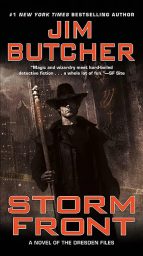 Review (Cyborg Caveman): For years, I passed on the Dresden Files. I never precisely turned my nose up at the popular and long-running series, but descriptions I had heard didn’t make it sound like my thing. Besides, I was too busy with my ever-deepening dive into vintage paperbacks. A good friend recently decided to change that and I’m glad they did.
Review (Cyborg Caveman): For years, I passed on the Dresden Files. I never precisely turned my nose up at the popular and long-running series, but descriptions I had heard didn’t make it sound like my thing. Besides, I was too busy with my ever-deepening dive into vintage paperbacks. A good friend recently decided to change that and I’m glad they did.
Authors (DMR Books): My name is Matthew Knight. I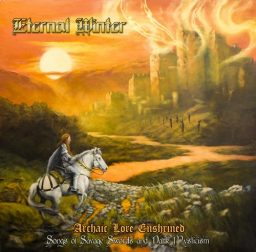 am a musician and writer hailing from southern Maryland. I am the singer, guitarist and songwriter of the heavy metal band Eternal Winter and the vocalist of Cauldron Born. Both bands feature extremely prominent sword and sorcery-themed lyrics and imagery. I am also the co-founder of the group Haunted Abbey Mythos which in recent years has produced a unique audio presentation of The Beast of Averoigne by Clark Ashton Smith.
am a musician and writer hailing from southern Maryland. I am the singer, guitarist and songwriter of the heavy metal band Eternal Winter and the vocalist of Cauldron Born. Both bands feature extremely prominent sword and sorcery-themed lyrics and imagery. I am also the co-founder of the group Haunted Abbey Mythos which in recent years has produced a unique audio presentation of The Beast of Averoigne by Clark Ashton Smith.
RPG (Grim Dark Magazine): Call of Cthulhu (2018) is a roleplaying survival horror game developed by Cyanide and published by Focus Home Interactive. Initially, the game was supposed to be created by Frogware Games, which created the Adventures of Sherlock Holmes (including one where the Great Detective investigates the Cthulhu Mythos). They had the game taken from them and, ironically, ended up making their own Lovecraft game with the upcoming The Sinking City.
Horror (Tolkien and Fantasy): The Dark Shadows Book of Vampires and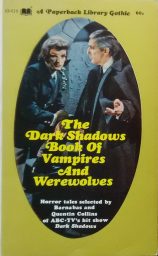 Werewolves (Paperback Library, 1970) is an anonymously edited collection of nine stories. all to do with (as the title suggests) vampires and werewolves. It is purportedly edited by Barnabas and Quentin Collins, the (fictional) vampire and werewolf characters, respectively, of the popular daytime television show, and it includes a six page introduction signed with their names.
Werewolves (Paperback Library, 1970) is an anonymously edited collection of nine stories. all to do with (as the title suggests) vampires and werewolves. It is purportedly edited by Barnabas and Quentin Collins, the (fictional) vampire and werewolf characters, respectively, of the popular daytime television show, and it includes a six page introduction signed with their names.
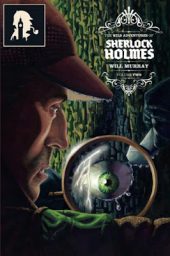 Sherlock Holmes (Rough Edges): Will Murray is back with THE WILD ADVENTURES OF SHERLOCK HOLMES, VOLUME TWO, and as entertaining as the stories in the first volume were, I think this new collection is even better. Here are the stories in this one. All of them were published originally in various Holmesian anthologies.
Sherlock Holmes (Rough Edges): Will Murray is back with THE WILD ADVENTURES OF SHERLOCK HOLMES, VOLUME TWO, and as entertaining as the stories in the first volume were, I think this new collection is even better. Here are the stories in this one. All of them were published originally in various Holmesian anthologies.
Crime Fiction (Chimney Sweep Reader): This non-fiction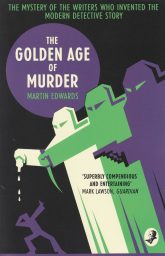 book won all sorts of awards when it came out in 2016, including the prestigious Edgar and Agatha awards. It’s easy to see why. I’ve dabbled in reading a few golden age detective novels, mostly Agatha Christies but a few others here and there. But I’ve never felt like I had a good handle on that era and how and why this sub-genre came to be so popular. I was also interested in learning more about the authors involved.
book won all sorts of awards when it came out in 2016, including the prestigious Edgar and Agatha awards. It’s easy to see why. I’ve dabbled in reading a few golden age detective novels, mostly Agatha Christies but a few others here and there. But I’ve never felt like I had a good handle on that era and how and why this sub-genre came to be so popular. I was also interested in learning more about the authors involved.
 Crime Fiction (Thomas McNulty): It’s always a joy to re-read a Mickey Spillane classic. Day of the Guns was the first of four Tiger Mann thrillers, written and published in 1964 when espionage thrillers had been fueled by the popularity of Ian Fleming’s James Bond novels. As a character, Tiger Mann is not much different than Mike Hammer, Spillane’s iconic fictional creation. The attitude is the same; the location is New York, and Tiger Mann frequents such locations as the Blue Ribbon restaurant, just as Mike Hammer and Spillane himself often did. There is also a nostalgia for the New York that existed shortly before and after World War II. The Blue Ribbon was located at 145 west 44th Street, not far from Times Square, a haven for opera singers and other celebrities.
Crime Fiction (Thomas McNulty): It’s always a joy to re-read a Mickey Spillane classic. Day of the Guns was the first of four Tiger Mann thrillers, written and published in 1964 when espionage thrillers had been fueled by the popularity of Ian Fleming’s James Bond novels. As a character, Tiger Mann is not much different than Mike Hammer, Spillane’s iconic fictional creation. The attitude is the same; the location is New York, and Tiger Mann frequents such locations as the Blue Ribbon restaurant, just as Mike Hammer and Spillane himself often did. There is also a nostalgia for the New York that existed shortly before and after World War II. The Blue Ribbon was located at 145 west 44th Street, not far from Times Square, a haven for opera singers and other celebrities.
History (Frontier Partisans): From the creator of the “Legends of the Old West” podcast, a book exploring the overlapping narratives of the biggest legends in frontier mythology.
West” podcast, a book exploring the overlapping narratives of the biggest legends in frontier mythology.
The summer of 1876 was a key time period in the development of the mythology of the Old West. Many individuals who are considered legends by modern readers were involved in events that began their notoriety or turned out to be the most famous ― or infamous ― moments of their lives. Those individuals were Lieutenant Colonel George Armstrong Custer, Sitting Bull, Crazy Horse, Wyatt Earp, Bat Masterson, Wild Bill Hickok, and Jesse James.
Pulp (Spectre Library): Quite possibly the coolest purchase I will make for all of 2023 (and we are only finishing up the 3rd month) is this batch of Western Trails magazines from the 1930s. Acquired back in early January 2023, I’ve been having fun slowly sorting through them.
Human Condition (One Last Sketch): The talk came in the wake of Dyer’s most recent book, The Shortest History of War, which likewise has a broad-strokes approach to grappling with what this killing is all about. The title plays to the “Oxford very short introduction” style of content; the book is in fact quite short, and is more inclined towards conceptual arguments behind what motivates the act rather than a recount of all the times states have rubbed up against each other. That makes for a breezier read, and opens up a lot more questions.
most recent book, The Shortest History of War, which likewise has a broad-strokes approach to grappling with what this killing is all about. The title plays to the “Oxford very short introduction” style of content; the book is in fact quite short, and is more inclined towards conceptual arguments behind what motivates the act rather than a recount of all the times states have rubbed up against each other. That makes for a breezier read, and opens up a lot more questions.
Please give us your valuable comment